


|
|
||||||||||||||||
|
|
||||||||||||||||
|
|
|||
|
|
Barcelona Barcelona Cathedral
Located in the heart of the Old Quarter of Barcelona, the Cathedral’s official name is The Cathedral of the Holy Cross and Saint Eulalia, although it is better known as The Gothic Cathedral of Barcelona or simply as Barcelona Cathedral.
A religious building has existed on the site since a Christian church was constructed there in the 4th century AD. Excavations along the Cathedral’s eastern wall exposed a previous structure consisting of three naves with columns of white marble which are thought to date to that time. It is believed that the relics of Saint Eulalia were kept in one of the chapels. Documentary evidence confirms that a number of Bishops from Spain attended the Council of Sardica (modern-day Sofia, Bulgaria) in 343 and that Barcelona was home to a cathedral at that time. This first cathedral was replaced by one built by the Visigoths when they moved into the area in the 5th century. A document dating to 599 states that the Cathedral was at that time dedicated to the Holy Cross. The Visigoth cathedral was severely damaged by the Moors when the city was sacked and burnt by Almanzor in 985. In 1046 the count of Barcelona, Raymon-Berenquer, began the construction of a Romanesque cathedral, which was consecrated on 18 November 1058. His Sepulchre and that of his wife can be seen on the cloister. 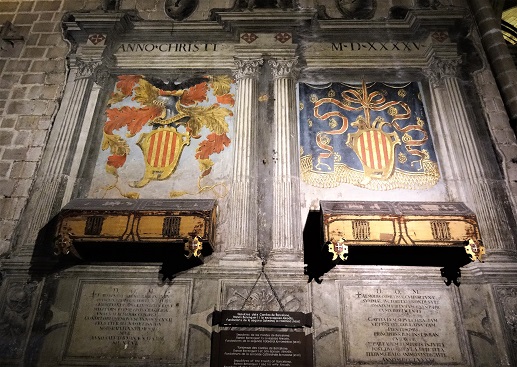 Construction on the Gothic cathedral that we see today began on 1 May 1298 on the foundations of the previous buildings and took over 150 years to build. This construction occurred in three stages, the first of which saw the building of the apse, the presbytery with its alter and crypt, and the radial chapels. The second stage saw the construction of the three naves and their chapels, while stage three involved the construction of the basilica, façade, and cloister. Due to funding problems, the cathedral remained incomplete until the early 20th century when the main façade and tower were completed in line with the original plans. Work also included the addition of the cimborio (a dome or cupola, specifically a lantern, usually octagonal in plan, built over the crossing of a Gothic cathedral). The two side towers were added in the 19th century, these being completed in 1913. Around the roof are gargoyles depicting both mythical and domestic animals. 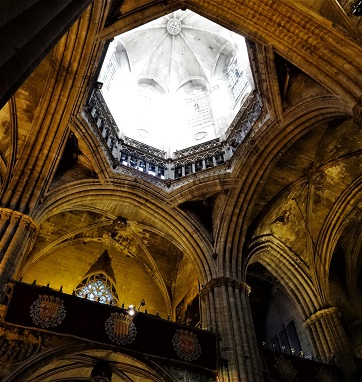 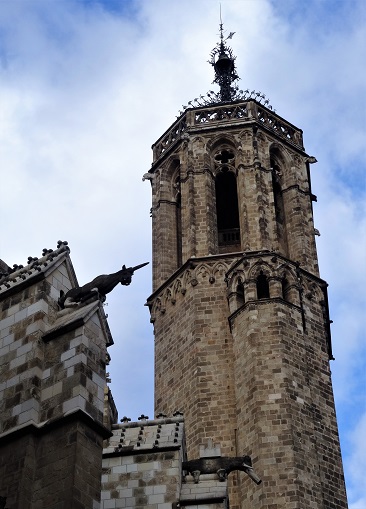  The construction of the neo-gothic façade we see today was finished in 1890. 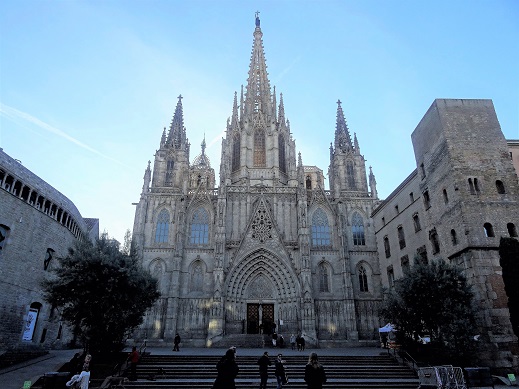 The cathedral is approximately 40 metres wide, 83 metres long, and 25 metres high, with two towers, one on either side of the front façade. The cathedral has five doors but it is on this façade, looking over the Plaza de las Catedral, that the main door is situated. In the centre of the doorway is a statue of Christ with the apostles on each side of the door. 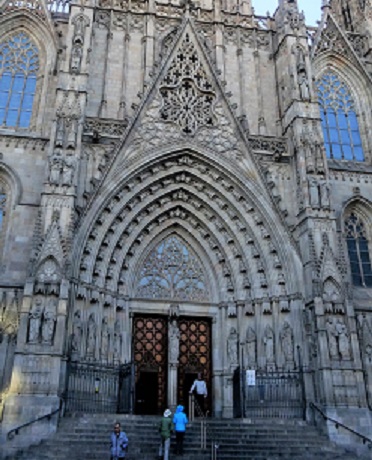 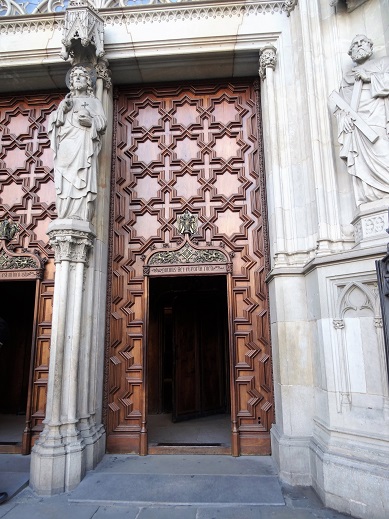 Its interior having three naves, the central nave being twice the width of the side ones. The height of the naves is all the same. 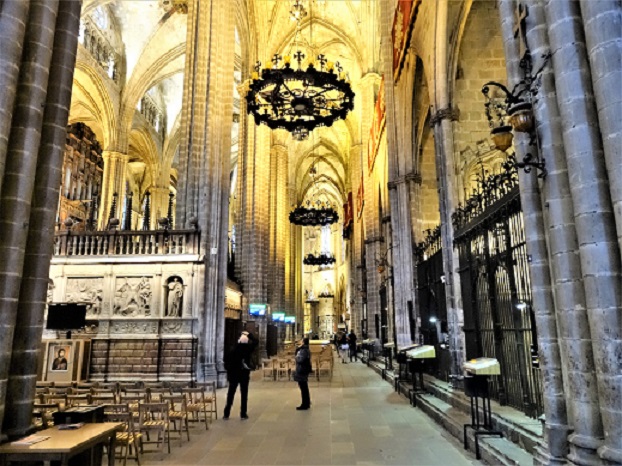 The sides of the cathedral are lined with a number of side chapels containing some beautiful altarpieces. 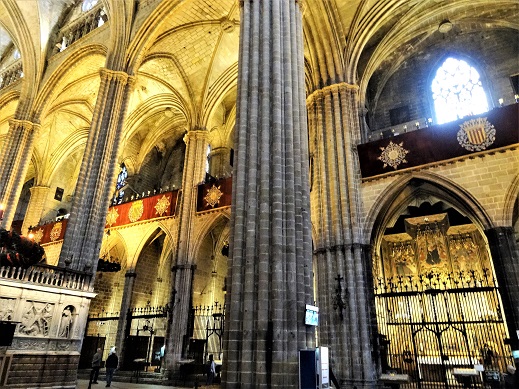 It also has ten chapels which are located around the apse of the altar. 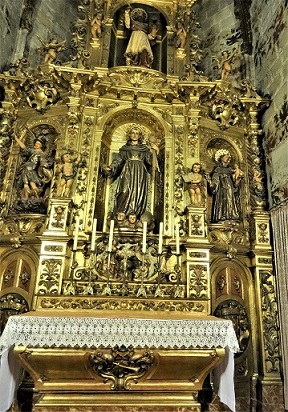 Chapel of San Bernardino and San Miguel Arcángel, contains a painted wood carved baroque altarpiece produced in 1783-85. This contains the images of San Bernardino de Siena, and San Miguel, plus San Antonio de Padua, San Jerónimo and the transfiguration of Santa Teresa de Jesús. The original altarpiece of this chapel is preserved in the Cathedral Museum.  The chapel of St John the Baptist contains the Renaissance altarpiece which dates to 1577. It contains a number of carvings depicting scenes in relief. These include the scenes associated with John the Baptist and those related to scenes from the New Testament. It also contains a statue of St Joseph with the Child. 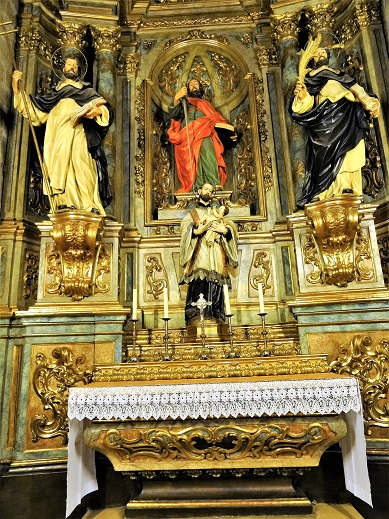 The altarpiece in the Chapel of St. Paul and St. Cajetan dates from 1769-1770. St Paul is depicted in the centre with St Cajetan below him with St Dominic to his right and St Peter of Verona to his left. 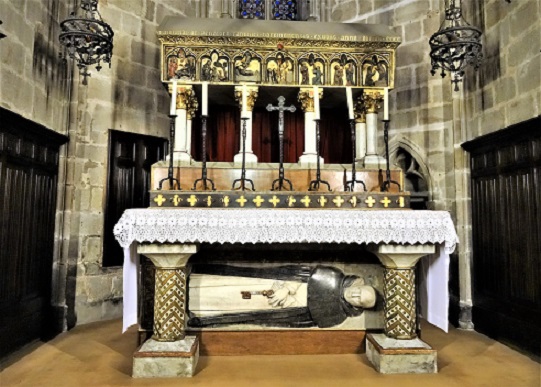 The Chapel of San Raimundo de Peñafort contains the recumbent sculpture of San Raimundo de Peñafort under the altar, the sarcophagus dates from the fourteenth century. In the naves, nearest to the presbytery, are two bell towers. These towers are octagonal in shape and contain stairways built in the 14th and 16th centuries. Each tower is 53 metres high. The Cathedral's pipe organ is located in the nave under the bell tower. It was built between 1537 and 1539. The covers of the windchest are decorated with grisailles, which are paintings executed entirely in shades of grey. The organ was restored between 1985 and 1994. 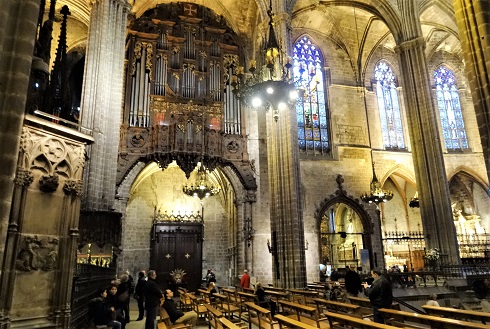 Work on the choir began in 1390 and was to continue over the next century with the additions and the pulpit. At the beginning of the 16th century, the future Holy Roman Emperor Charles V established the Cathedral as the site of the Order of the Golden Fleece, which had its first meeting there in 1518. The Cathedral’s choir stalls still retain the coats-of-arms of the Knights of the Order. 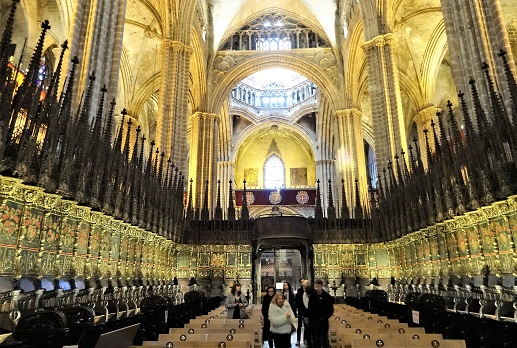 The High Altar is made of white marble which is supported by two capitals from the Visigoth temple of the 6th century. Behind it is the exaltation of the cross which is placed at a height of half of the central column. Around it are six angels. This was created and placed here in 1976 to replace the altarpiece from the 14th century. 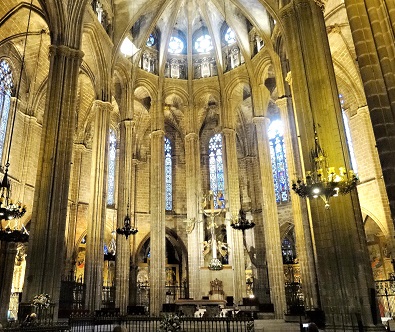 The cathedral is dedicated to Saint Eulalia, a 13-year-old girl who was martyred under the persecution of Christians known as the Diocletianic Persecution, which took place in 303 AD under the Roman Emperor Diocletian. She is one of two patron saints of Barcelona. Her tomb can be seen in the Cathedral crypt which is located under the presbytery at the rear of the altar. Although the vault was completed in 1326, St Eulalia’s remains were not transferred into it until 1339. The alabaster sarcophagus contains scenes depicting the saint’s martyrdom. 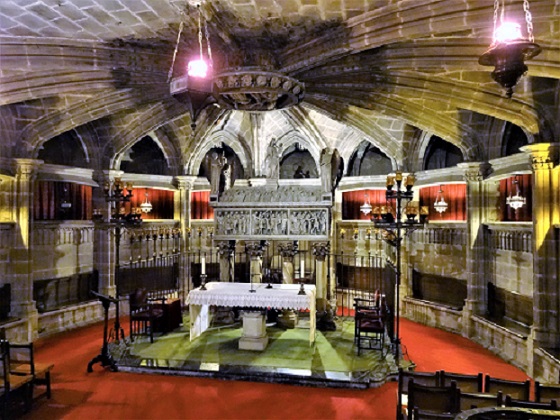 The Cathedral also contains the tombs of a number of other saints. Within the cloister are several chapels, including the chapel of St Lucia. This is rectangular in shape with a single nave formed by a pointed barrel vault. It is in late Romanesque style constructed between 1257 and 1268 as a chapel for the Episcopal Palace. The chapel has two doors: one at the back leads to the Cloister and the other to the exterior. Within it are two sepulchres with the remains of the 13th-century bishop Arnau of Gurb and that of canon Francesc of Santa Coloma dating from the 14th century. 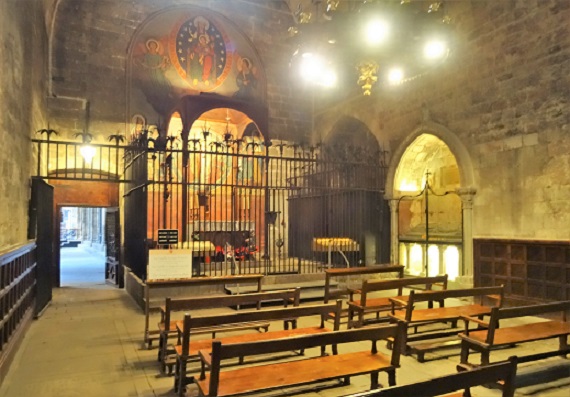 It includes works of art, like the striking Burial of Christ by Josep Limona. 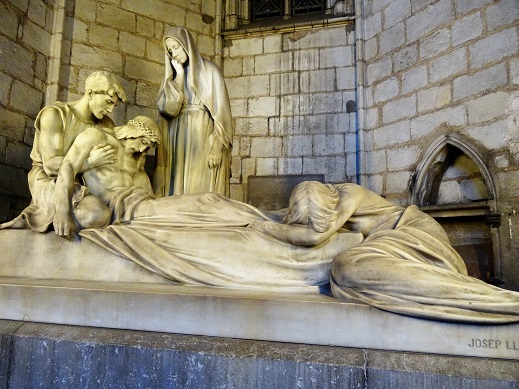 It contains a shop and a museum. The museum holds a collection of various papyruses dating from the 5th to the 8th century, as well as other documents from that time period. Of interest is the Esponsales collection, which contains hundreds of thousands of names of people who lived within this geographical area from 1451 to 1905, presenting an excellent source for genealogical and social studies information. Also within the cloister is The Well of the Geese, constructed in 1448. This consists of a pond and a fountain where thirteen white geese are kept, signifying that Saint Eulalia was 13 years old when she was martyred. By the fountain is a statue of St George. 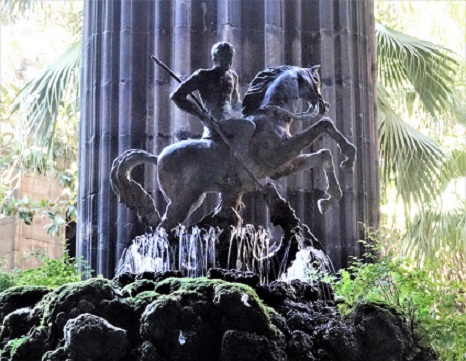 The Barcelona Cathedral underwent a programme of cleaning and restoration from 1968-72 and is a popular tourist attraction. To see more photographs and take a virtual tour of the site click on the photoshow below. |
|
|
|
|
|||
All Photographs were taken by and are copyright of Ron Gatepain
| Site Map |
